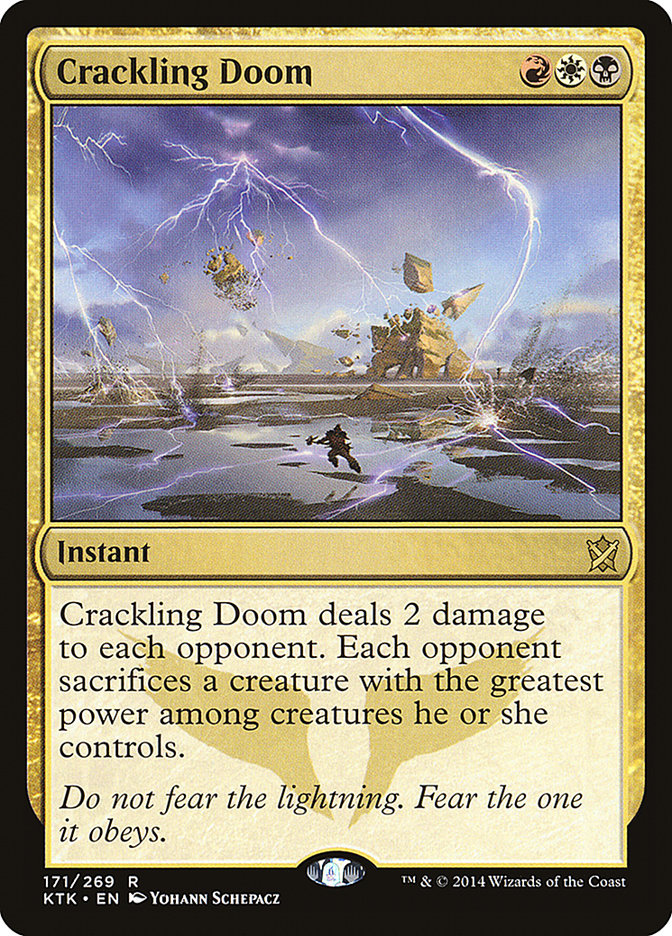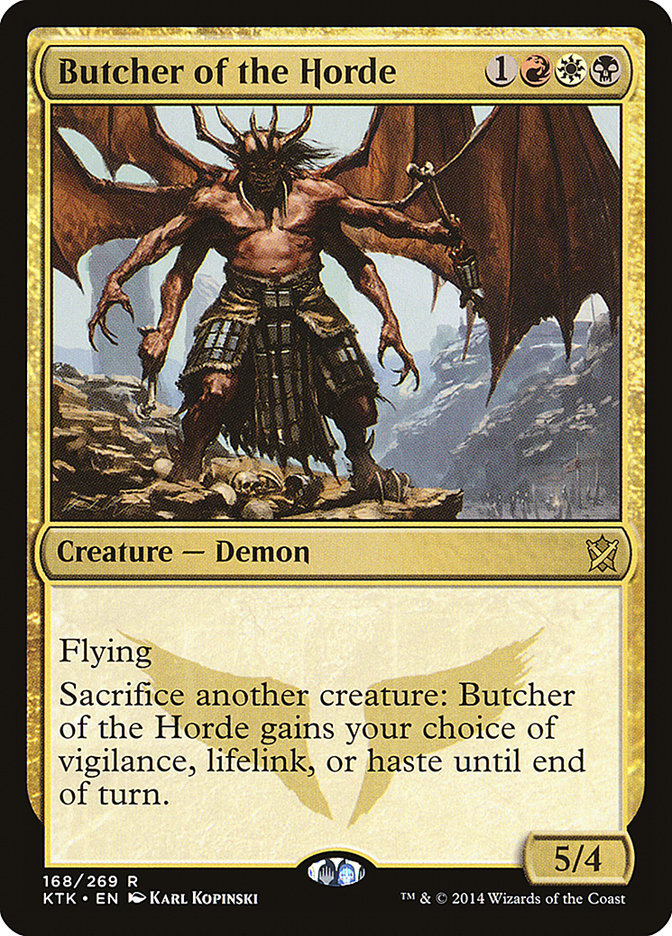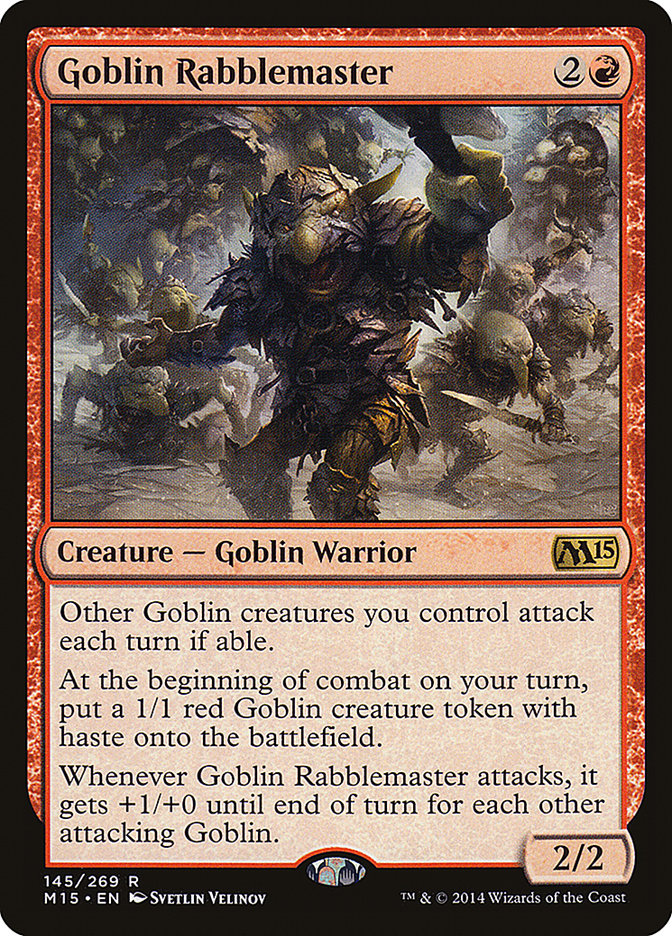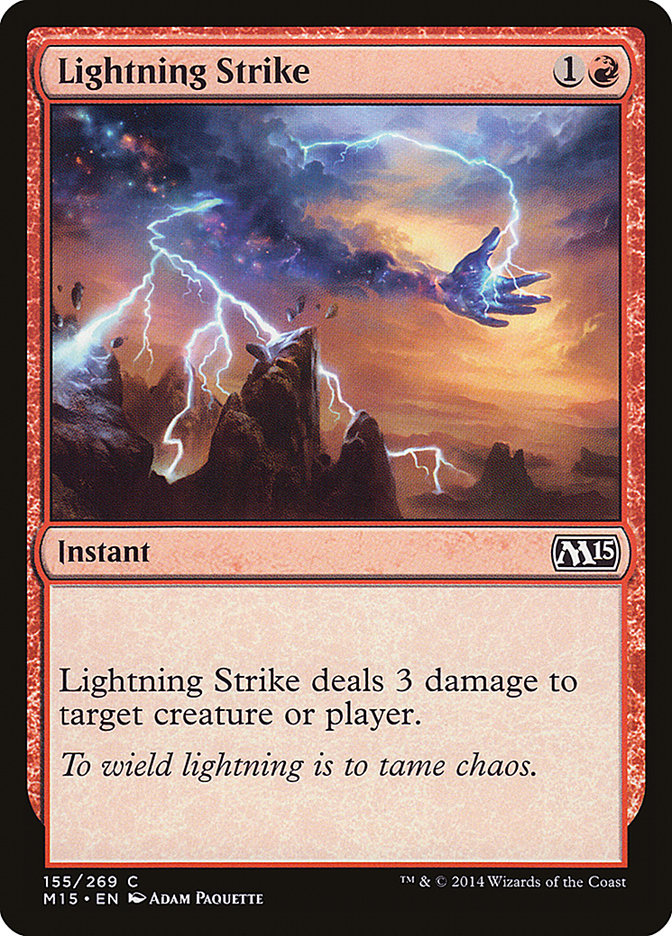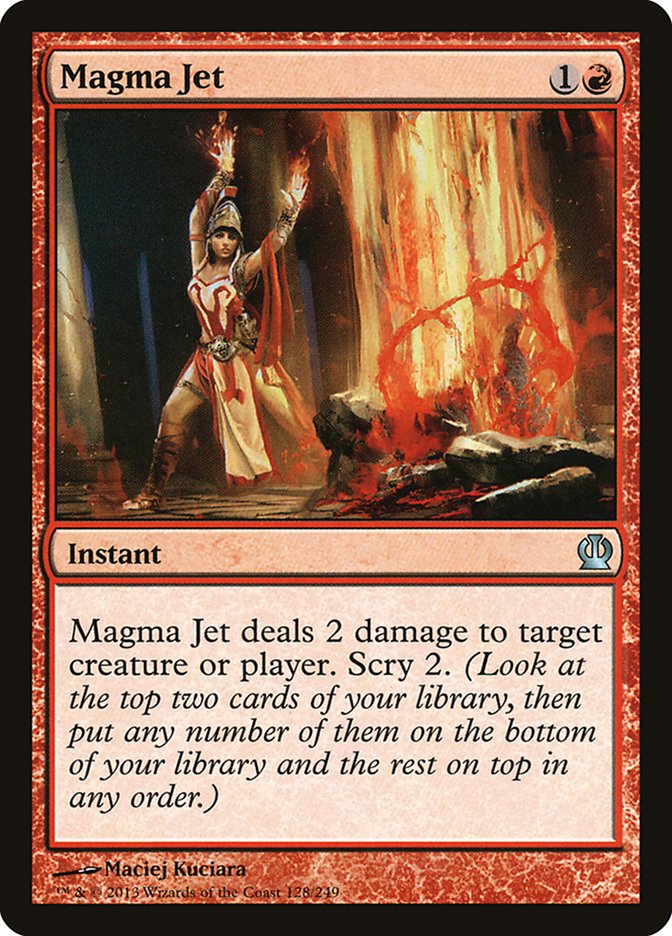Legacy captured the hearts, minds, and eyeballs of Magic players everywhere last weekend with Grand Prix New Jersey shattering records left and right. It
was not only the biggest Legacy tournament ever, but it was also the second largest Constructed tournament and third largest Grand Prix of all time. It
broke the viewership records on Twitch for any non-Pro Tour event, with over 20,000 people tuning in for the finals.
Kind of a big deal. Its apartment smells of leatherbound books and rich mahogany, if you know what I mean.
In the understandable hubbub last week about the upcoming Grand Prix in New Jersey, the results of the Standard Open in Columbus the weekend before got
more or less brushed under the rug. As exciting as Legacy may be with all its blinged out decks, flashy dual lands, and Force of Wills, Standard is the
working-class format that pays the bills – and hands out invitations to the Pro Tour! A huge percentage of the recently announced preliminary PTQs are
being run as Standard, along with the Regional PTQs themselves, plus upcoming Grand Prix like San Antonio and Dallas. Add to that the Standard Open Series
cropping up around the country every weekend, and it’s pretty clear what format it most pays to specialize in.
While we’ve heard a lot about the Abzan vs Jeskai metagame since the Pro Tour, and several exciting decks that have cropped up have gotten quite a bit of
attention, like Sultai Reanimator or Jeskai Heroic Combo, there has been one clan that has been quietly posting results in Standard that hasn’t seen much
press: Mardu. With Legacy on everyone’s mind last week, the presence of three distinct Mardu decks in the Top 8 of the Standard Open in Columbus went
almost entirely unnoticed.
While Mardu didn’t win the tournament, putting three into the Top 8 is even more impressive, especially since the clan certainly wasn’t the most popular in
the room -and there were three more waiting just outside in the Top 16! Between this, Brad Nelson’s Top 8 finish at Grand Prix LA, and the deck’s quiet but
consistent success on Magic Online, it might be high time we took a look at what makes these bloodthirsty folks tick.
Creatures (18)
Lands (24)
Spells (18)

Creatures (14)
Planeswalkers (4)
Lands (25)
Spells (17)

Creatures (5)
Planeswalkers (11)
- 1 Liliana Vess
- 3 Chandra, Pyromaster
- 3 Elspeth, Sun's Champion
- 2 Sarkhan, the Dragonspeaker
- 2 Sorin, Solemn Visitor
Lands (25)
Spells (19)

These are the three different versions of Mardu that made it to the elimination rounds at the Standard Open in Columbus. When I first set out to write
about them, my initial thought was to take a look at the lists and see what they had in common in the hopes of discovering if there was some common thread
that might explain their success. But once I got down to the dirty work of analyzing the lists, this is what I found.
Outside of lands, this is the only common card in the maindeck of all three lists, which is actually pretty remarkable when you think about it. Three decks
in the top 8 of a Standard tournament sharing all three colors only actually have one spell in common amongst all of them. Andy Ferguson’s aggro deck and
David Nolan’s midrange deck have quite a bit of overlap, but Sean Evans went in a completely different direction entirely with his planeswalker deck,
leaving the tri-color removal spell as the only common thread.
All that said, Crackling Doom is certainly a great reason to play Mardu. In a world of conditional removal spells, Crackling Doom asks no questions, always
taking out your opponent’s biggest threat. Thanks to being a sacrifice effect, it can actually take out creatures that might otherwise dodge removal, like
the protection from white Stormbreath Dragon or Sarhkan, the Dragonspeaker in indestructible 4/4 flying form.
For that same reason, Crackling Doom is particularly effective against the newly popular Heroic strategies, which rely on powering up a single large
creature and protecting it from removal with cards like Gods Willing or Ajani’s Presence. Crackling Doom bypasses that protection and sends Favored Hoplite
and friends packing.
On top of all of that, it adds insult to injury by hitting your opponent in the face for two damage! This is particularly appealing for the aggro and
midrange versions of Mardu that are looking to close out the game quickly, but it also comes in quite handy for the planeswalker version against opposing
planeswalkers. Sorin, Solemn Visitor can be a powerful card in control mirrors because it generates a creature and sticks around threatening to make more,
but one Crackling Doom sends both the vampire and daddy packing.
There’s certainly a lot to like about Crackling Doom, especially if decks like Jeskai and U/W Heroic are popular. But if we discount the oddball
planeswalker version for a moment, where else do these decks overlap?
It should come as no surprise that the Mardu representative of the three color rare creature cycle sees play in both of the lists with more of an
aggressive bent. Butcher of the Horde is a card that people predicted would have an impact on Standard from the first day it was spoiled. It took a little
longer than people might have thought, but shockingly a 5/4 flying creature that can gain a multitude of other abilities seems to have what it takes to
compete.
As an aside, I think the evolution of this Standard format and the rise of decks like Mardu, Temur, and Sultai is very telling of the way people generally
approach tournament preparation. At the Pro Tour, Jeskai and Abzan were far and away the most popular decks and in the end, the most successful decks,
making up almost the entire Top 8. Incidentally, these were also the decks that people expected going in to the tournament because there were easy shells
to build from courtesy of the Standard Open series in the weeks leading up to the tournament, or the previous Pro Tour in the block format where Patrick
Chapin won with Abzan before anyone knew to call it that.
In the wake of the Pro Tour, many people lamented the “stale” format, pointing to the Pro Tour Top 8 results as a sign that there were limited options for
anyone looking to succeed in Standard. And yet even now we see new decks emerging not just as contenders but winners week after week. It just goes to show
that there are opportunities to innovate and uncover new strategies. No one pegged Mardu or Temur as major players a month ago, and yet here we are
watching them take half the Top 8 slots of Standard Opens and Grand Prix.
Anyway – I digress. Butcher of the Horde!
Yes, Butcher is pretty obviously powerful just as a 5/4 flier with upside, but it gets even more powerful with the right supporting cast. Both Andy and
David’s decks are great at providing the big demon with sacrifice fodder, the most prominent of which comes from Goblin Rabblemaster. Rabblemaster is great
at ending games quickly unopposed, but less effective when your opponent has creatures that can actually block it and its minions. Butcher of the Horde
means that your suicidal goblins don’t have to die in vain. They still have to die, but they get to give their lives for a noble purpose, such as giving
Butcher of the Horde lifelink (like the actual card Noble Purpose). A fed Butcher of the Horde is not a creature anyone wants to have to race.
In addition to Rabblemaster, both decks have additional tools to help feed their demons. Andy’s aggro deck has Bloodsoaked Champion, which can come down
early and get a few hits in before getting thrown into Butcher’s maw. If your Butcher sticks around and can keeps attacking, you have a neverending source
of food, since you can repeatedly bring the Champion back from the graveyard thanks to its raid ability.
David Nolan’s deck features the Brad Nelson tech of Hordeling Outburst. I love Outburst in that deck because it has so much synergy with so many other
things that are going on. Not only can it fuel Butcher multiple times, but it can also pump Rabblemaster because it makes goblin tokens, triggers prowess
on Seeker of the Way, and synergies well with Sorin’s +1 ability because it makes three creatures for a single card to maximize the bonus. Hordeling
Outburst is the sort of card that’s easy to gloss over on a spoiler list, but it does so much when you play with it that it’s hard to imagine how you
missed it.
Last among the shared cards between these two decks, but certainly not least, are Lightning Strike and Magma Jet. Lightning Strike is a great card in both
of these decks because it’s a cheap removal spell that can go to the face in a pinch, and these are decks that can put on enough pressure where the threat
of burn is very valuable. Butcher hits hard, and two points here and there from Crackling Doom certainly adds up. Magma Jet is a marginally, but
appreciably, worse two cost burn spell, since scrying for two is generally not worth giving up a point of damage, especially a very critical point for
killing Mantis Riders.
So it seems like what Mardu has to offer across the board is a selection of efficient creatures and removal. Not a bad place to start, is it? And, as we’ve
seen from these three separate decks, it has a lot of different directions it can go with that baseline.
Andy Fergusen’s aggro deck takes things to one extreme, with Bloodsoaked Champion getting things started off quickly, while Thoughtseize and Brain Maggot
clear the way for the heavy hitters. I have to say I like the disruption package here; while I’m usually not a big fan of Brain Maggot in decks when I see
it, in Andy’s deck, the Maggot is more of a tempo play than anything else, breaking up the opponent’s ability to react in time to things like Rabblemaster
and Butcher. Even a one turn window with either of those can be, as Zac Hill would say, devastating, especially with the array of burn available to finish
things off.
Sean Evans goes in the absolute opposite direction, with neither Rabblemaster nor Butcher in his lineup. Instead, he opts for a suite of eleven
planeswalkers, using six sweepers and even more spot removal to clear and reclear the board while his superfriends take over. Where Andy uses Thoughtseize
to fish out removal spells, Sean is more likely to look for opposing threats that might pressure his planeswalkers. Brimaz and Wingmate Roc round this out
as resilient threats that can also play good defense, though I’m sure Sean changed gears with more than one aggressive Thoughtseize into Brimaz opening
over the course of the tournament.
If I were in Sean’s place piloting this list, I think I’d want at least one more land and probably a few copies of Read the Bones. 25 land seems a bit
light for how many five plus casting cost spells are in this deck and how heavily you rely on being able to cast them on time. The least impressive looking
card to me seems like Mardu Charm. I’d probably look to try two Read the Bones over those, and maybe shave one copy of Chandra for another land – probably
a Nomad Outpost, with how many double colored costs are in the deck. In fact, I’d probably start my manabase with four Outposts and fill in as many Temples
as I felt comfortable with. Trying to play Brimaz, Anger, and Hero’s Downfall in the same deck without four tri-lands seems a bit suspect.
David Nolan’s deck is smack in the middle, splitting the difference between creatures and planeswalkers and eschewing discard altogether for just more
removal and threats. It’s probably the list I like the best of the three, in part because of the exciting Hordeling Outburst synergies, and in part because
it seems the best suited to handling whatever might get thrown at it. I’m obviously somewhat biased toward midrange style decks, but that’s because I think
there’s a lot of value in being able to play either offense or defense when it’s called for. David had the ability to pivot squarely in mind with his
sideboard, as four planeswalkers, five sweepers, and three copies of Read the Bones let him transform into a deck reminiscent of Sean’s.
Ultimately, there are a lot of options when it comes to building Mardu. Those who watched my latest videos might remember I even ran into a Mardu warrior
deck there! The clan has a lot of powerful tools, and it’s not surprising to see it doing well. But with how under the radar it’s managed to stay despite
its success, you may still be able to catch your opponents off guard.
What do you think? Is Mardu the next big thing in Standard? How would you build the deck?

